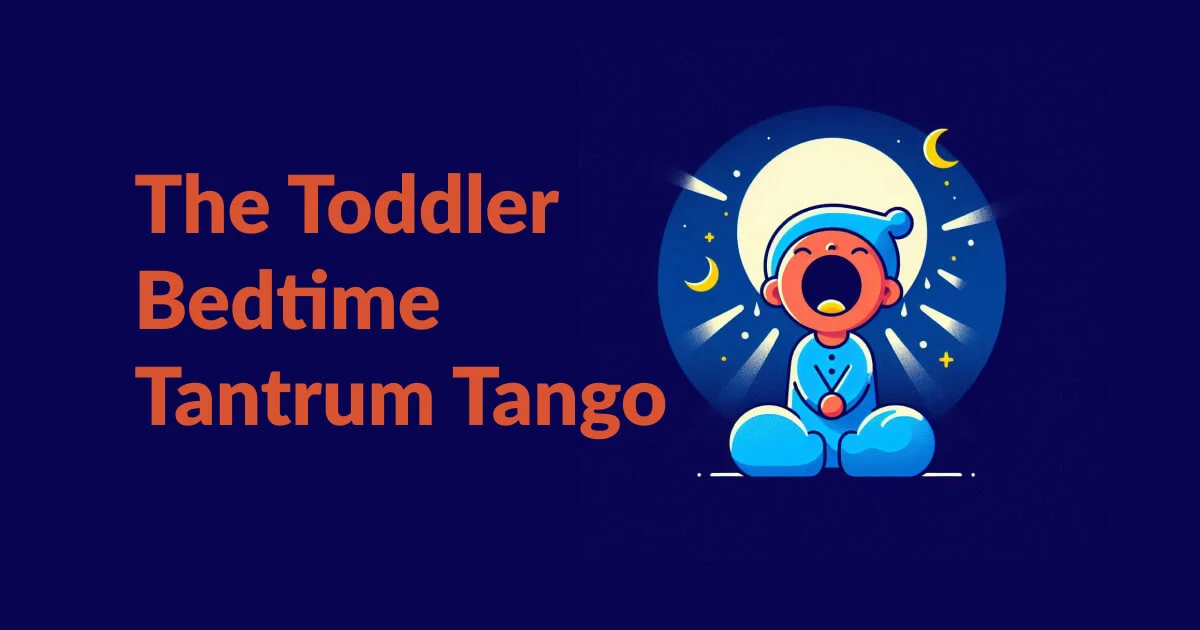
Why Do Toddler Tantrums Happen?
This guide is your roadmap to conquering those nightly meltdowns and reclaiming your sanity. The Toddler Tantrum Tango: A Nightly Struggle.
sleepparentingbabybedtimeRemember those sweet newborn days when your little one slept for hours on end? Ah, the blissful memories. Fast forward to the toddler stage, and suddenly bedtime has become a battlefield – a nightly battle of wills that leaves you feeling exhausted and frustrated. We’ve all been there, new parents, navigating the terrain of toddler bedtime tantrums. Let’s face it, bedtime tantrums are a universal experience – a rite of passage in the world of parenting. But fear not, my fellow sleep-deprived warriors! This guide is your roadmap to conquering those nightly meltdowns and reclaiming your sanity.
Why Do Toddler Tantrums Happen?
I remember it vividly. My son, around two years old, had transformed from a cuddly, sleepy baby into a raging, bedtime-hating monster. Every night, the same routine played out – we’d say goodnight, I’d leave the room, and the screams would begin. It was a chorus of “Mommy, I need you!” mixed with “I’m not tired!” and “I don’t want to sleep!” It felt like a scene straight out of a horror movie, except the monster wasn’t under the bed – it was in my son’s tiny body.
Toddler tantrums, especially at bedtime, aren’t just random explosions of emotion. They’re a complex mix of developmental changes, emotional needs, and the simple fact that toddlers are learning to navigate the world around them. Think about it – they’re rapidly growing, learning new things, and testing boundaries. The lack of language skills can sometimes add fuel to the fire, making it difficult for them to express their needs or frustrations.
The Science Behind The Tantrums
According to Dr. Susan Bartell, a renowned child psychologist, “Bedtime tantrums are a normal part of a child’s development. They often occur because toddlers are learning to separate from their parents and become more independent. This transition can be scary and overwhelming, and it can lead to emotional outbursts.”
Understanding Your Toddler’s Signals
It’s important to remember that tantrums, while frustrating, are a form of communication. Instead of getting angry or frustrated, try to understand what your toddler might be trying to tell you. Here are a few common triggers for bedtime tantrums:
- Overtiredness: Just like adults, toddlers can get overtired, leading to irritability and tantrums. Pay attention to your child’s cues during the day. If they’re rubbing their eyes, acting clingy, or seem easily frustrated, it might be a sign that they’re ready for a nap or bedtime.
- Changes in Routine: Toddlers thrive on consistency. Any unexpected change in their routine, like a later bedtime or a different bedtime story, can throw them off and trigger a tantrum.
- Separation Anxiety: This is especially common during the toddler years. They may feel anxious about being separated from their parents, especially at bedtime.
- Hunger or Thirst: A simple case of hunger or thirst can easily turn into a tantrum. Make sure your child has eaten a balanced dinner and has access to water before bedtime.
- Physical Discomfort: A dirty diaper, tight clothing, or even a scratchy blanket can lead to discomfort and a tantrum.
Tips for Taming the Tantrum Tango
Now that we understand the science behind the tantrums, let’s get to the good stuff – the strategies that can help you navigate those bedtime battles.
1. Create a Consistent Bedtime Routine
Consistency is key. A predictable routine signals your child that it’s time to wind down and prepare for sleep. This can include a warm bath, a quiet story time, and a lullaby. Stick to the same routine every night, even on weekends, to help your child’s body and mind get ready for sleep.
2. Communicate Expectations
Talk to your child about bedtime expectations throughout the day. You can say things like, “We’ll read a story and then it’s time for bed” or “After your bath, we’ll put on your pajamas.” By communicating these expectations clearly, you’re helping your child understand what to expect at bedtime.
3. Set Realistic Expectations
Don’t expect your child to fall asleep instantly. It takes time for toddlers to adjust to bedtime, and they may resist for a while. Be patient and consistent, and they will eventually learn to settle down.
4. Externalize the Rules Around Bedtime
Sometimes, it’s easier for toddlers to understand bedtime if it’s presented as something outside of your control. You can use a bedtime clock, a “sleepy time” light, or a “magic lullaby” that helps signal bedtime.
5. Avoid Bartering
Giving in to a tantrum with promises or rewards teaches your child that big behavior gets them what they want. Stay strong and stick to the bedtime routine, even if it means enduring a few tantrums.
6. Be Present and Supportive
It’s important to be present and supportive during your child’s tantrums. You can validate their feelings by saying things like, “I see you’re feeling frustrated” or “It’s okay to be sad that bedtime is here.” However, avoid escalating the situation by getting angry or frustrated yourself.
7. Understand the Trigger
If your child is having frequent tantrums, try to identify the trigger. Is it overtiredness? Separation anxiety? Something else? Once you know the trigger, you can work to address it and prevent future tantrums.
8. Seek Professional Help If Needed
If your child’s tantrums are frequent, prolonged, or aggressive, it’s important to seek professional help. A therapist or psychologist can help you rule out any underlying mental health concerns, such as sleep disorders or anxiety.
9. Be Patient and Consistent
It may take time for your child to adjust to a new bedtime routine. Be patient and consistent, and they will eventually learn to settle down and sleep well.
10. Encourage Open Communication
Create a safe and judgment-free environment for your child to express their thoughts and feelings. Listen to them actively, validate their emotions, and communicate expectations clearly and consistently.
11. Incorporate Family Time
Regular family time is crucial for building strong bonds and fostering healthy communication. Spend quality time together playing games, reading books, or enjoying a family meal. This helps create a sense of security and connection, which can be especially important at bedtime.
Remember, new parents, you’re not alone in this bedtime tango. It’s a journey of patience, consistency, and love. By following these tips, you’ll be well on your way to conquering those nightly meltdowns and creating a peaceful bedtime routine for your little one. And who knows, maybe you’ll even reclaim some of your precious sleep time! Just remember, each night is a new opportunity to learn, grow, and build a stronger connection with your child. So, keep dancing, keep singing, and keep loving – because the bedtime tantrum tango is just one more step in the amazing journey of parenthood.
Explore & Read More Blog Articles

32 Baby Room Decor Ideas
A collection of 32 creative ideas for your baby's room. Get inspired by these design ideas and create your own room.

The Guide to Creating the Perfect Nursery
As you eagerly await your little baby's arrival, one of the most exciting tasks on your to-do list is creating their very own room / nursery.

Navigating Postpartum Depression as a New Dad
A guide to navigating postpartum depression as a new dad, including tips for coping, communication, and self-care.

Postpartum Depression: Signs, Symptoms, and Seeking Help for New Moms
Discover the signs and symptoms of postpartum depression, understand the difference between baby blues and PPD, and learn how to seek help

How To Dress Your Baby for Sleep
A story of sleepless nights, the nighttime temperature struggle, and how to dress your baby for sleep.

Why Do Toddler Tantrums Happen?
This guide is your roadmap to conquering those nightly meltdowns and reclaiming your sanity. The Toddler Tantrum Tango: A Nightly Struggle.

Why Your Infant Won't Stop Crying?
A guide to help you understand why your newborn cries non-stop at night and how to soothe them.

When to Move Your Baby to Their Own Room ?
Let's break down the facts and explore the pros and cons of room sharing versus independent sleep, so you can make an informed decision that works best for your family.